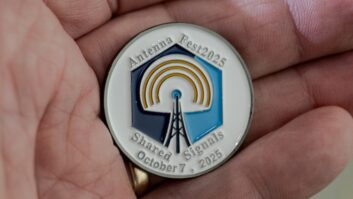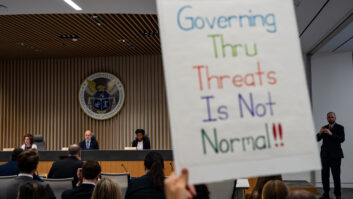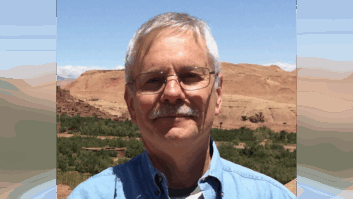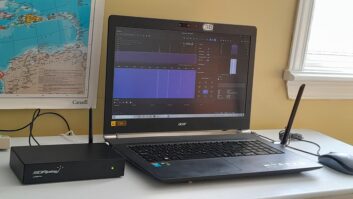A view of a room
Sep 1, 2003 12:00 PM, By Gary Eskow
Recent projectsThe work of Bill Young Productions can be heard on several recent radio spots including concert productions for the Eagles, Fleetwood Mac, the Dixie Chicks, Tim McGraw and Brooks and Dunn, as well as the recent ad campaign for Pony shoes.Equipment ListYamaha NSM-10
Yamaha DM 2000 digital console
TC Electronics Finalizer
Symetrix 528 mic processor
Rosendahl Nanosyncs
Pro Tools Mix 24 system
Otari MTR 12-4 track
Otari MTR 12-2 track
Otari DTR-7 DAT recordersNeumann TLM103 mic
Meyer Sound HD-1 monitors
Manley Vox Box mic processor
Lexicon MPX 1 reverb
Eventide H3500 Harmonizer
Denon DNC-680 CD player
DBX 166 compressor/limiter
Avalon VT-737SP mic processor
Aphex Dominator
AKG 414 BTL II mic
Bill Young Productions, a more than 20-year-old facility located in Sugar Land, TX, has a balanced workflow that includes radio and television commercial production, film trailers, print and a growing new media wing that specializes in Web design. The president of BYP, Steve Kelly, has a long history in radio that dates back to his work as a disk jockey in the 1960s.

While radio is the facility’s main format, a tremendous amount of TV production is also handled here, particularly in the concert area. For example, the studio will take existing footage of Fleetwood Mac and build a 30-second commercial for a theatrical release. The facility has also done some Broadway work, using 35mm film to produce a spot, but radio still accounts for about 60 percent of the company’s business.
Six of the facility’s eight recording suites, which were designed by Russ Berger in 1990, have recently been revamped. Protools digital audio workstations and Yamaha DM2000 digital production consoles have been installed in each room.
�The move towards an all digital pathway is irreversible, for radio as well as television and video,� said Kelly. A long time digital recording and editing proponent, Kelly recommended that the company purchase an AMS Audiofile DAW in the late 1980s. At that time, the $100,000 AMS system was the real workhorse. When BYP moved to its current location in 1990, Kelly realized that the firm had to look at other digital editing systems, and investigated everything that was on the market. Protools, even in its early stages, impressed them from the start, and the studio has continued to upgrade its systems. There are plans to purchase some Protools HD systems soon.
While Digidesign, the manufacturer of Protools, has converted many large-format operators to its streamlined mixing surface, BYP chose to use a traditional-style console in the control rooms. The Yamaha DM2000 was the choice.
Inside the control room of the studio.

The Yamaha DM2000 is a fully digital console with 96 input channels. It is fully compatible with the surround sound work that is not necessary for the radio work BYP handles on a daily basis, but surround sound is critical to its television and theatrical productions. The console’s tight integration with Protools was a major factor that led Kelly to purchase multiple DM2000s.
The console features a built-in interface that interfaces with Protools via MIDI. One side of the DM2000 is dedicated to Protools. Track punch-ins, scrubbing and all of the other common Protools editing functions are laid out clearly on the console. The combination of the console � even though it is a full-format production board � has a much smaller footprint than the analog consoles the facility had been using. After extensive research into all the available console choices, the decision was made.
Digital’s delay
Like many others, Steve Kelly is surprised and frustrated at the slow pace of digital technology in the radio broadcast area. He expected that digital transmission would grow more quickly than it has. He expected that a system would have been approved by the FCC by the end of the 1990s. Consumers are taking notice of the improvement provided by digital TV, Kelly anticipates that the same improvement will be made to radio when the system’s details are established.
BYP distributes more than half of its radio content via the Internet using Fast Channel. Productions are encoded in MPEG2 and sent to Fast Channel, along with tracking paperwork that includes the name of the spot, its length and who needs to receive it. Fast Channel takes it from there distributing the spot to every station to which it is assigned. Everything is done online, including the transmission of a thumbnail version in MP3 if a client needs to hear the spot in advance.
The facility maintains some legacy equipment as well. Some clients still want reel-to-reel tapes. DAT tapes are rarely used, but the facility might get one or two requests a year for them. Kelly said that distribution via Fast Channel is gaining in popularity among his radio clients.
�MP2 is the audio quality you get on a DVD. A lot of our clients request MP3 at 192kb/s, and that sounds very good. It’s not audiphile quality, but it is perfectly satisfactory for commercials. I also do a lot of freelance production work for car dealerships, and I send them all MP3s without any problem,� said Kelly.
Tim Triche, a systems engineer at Bill Young Productions, says that the company is in the process of developing its own delivery system. Triche hopes to have it up and running in a few months.
The facility’s own delivery system will use a commercial MP3 encoder that has been customized for their needs. A final production is mastered as a 24-bit, two-channel Protools file, which is fed into a server. The server then automatically processes the spot into a 16-bit stereo. WAV file. Another program then converts it into MP3 format.
Although BYP’s recent upgrades did not include retrofitting an existing room to accommodate surround mixes, this will happen in the near future. The DVD projects handled by the facility include the audio and video post work, but the Protools tracks are sent to a 5.1 facility in Nashville or Los Angeles for completion. BYP would like to keep the entire project in house.
Still, in this world of digital technology, there is a place for the tried and true, according to Steve Kelly. BYP still uses its trusty Otari MTR12 four-track tape machines on a daily basis. The machines were purchased in 1985. Except for routine maintenance, they have proven to be indestructible. Kelly feels that they’re so much better than any digital recorder for voice-over work, producing a fatter, warmer and punchier sound. The final mix is dubbed in into Protools.
Eskow is a composer and journalist who lives in central New Jersey. He is a contributing editor for Radio magazine’s sister publication Mix magazine.







